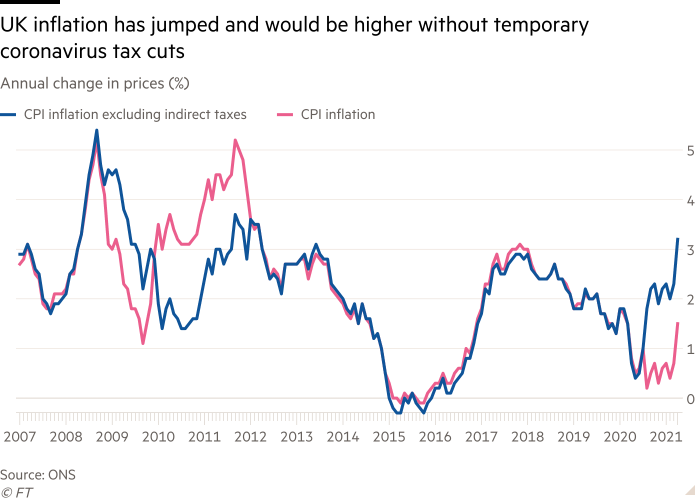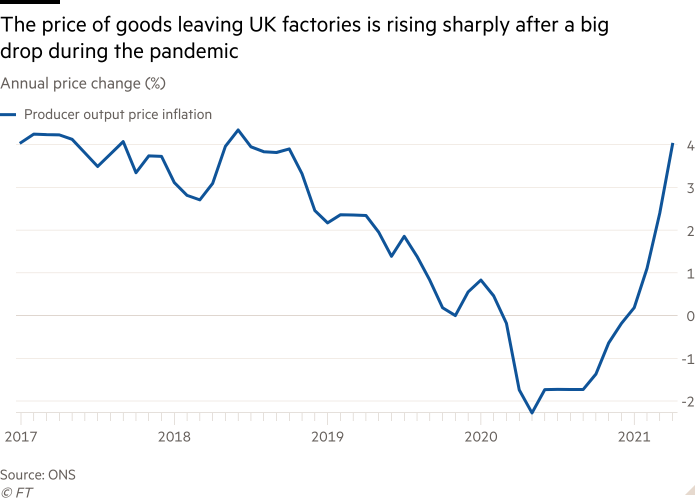The annual rate of inflation in the UK more than doubled in April to 1.5 per cent on the back of higher petrol prices and gas and electricity bills, its highest level since the start of the coronavirus pandemic.
Rising from 0.7 per cent in March, the increase in the consumer price index matched expectations from economists and the Bank of England, who see the move as a step on the path towards inflation exceeding the 2 per cent target by the end of the year.
The official figures also showed that the rate of inflation was only kept as low as it was because of the temporary 5 per cent rate of value added tax on hospitality, which will last until the end of September.
If taxes were at their normal levels, inflation, measured by the consumer price index would have risen to 3.2 per cent, the highest rate for nine years.
Unlike in the US, where the headline inflation measure hit 4.2 per cent in April, the UK figures do not yet show signs of a sustained overshoot in price rises, although economists said there were some causes for concern in the data.
Prices of eating out in restaurants, staying in hotels, and clothing all increased sharply in April, after non-essential shops reopened and hospitality venues were allowed to serve customers outside.

Samuel Tombs, UK economist at consultancy Pantheon Macroeconomics, said the figures were not yet showing the worrying signs of a reopening surge in inflation seen in the US, but added that “CPI inflation will rise further over the coming months as prices for air travel, domestic accommodation and package holidays leap in response to rebounding consumer demand”.
Most economists thought the figures on Wednesday suggested the coming rise in the rate of price increases would be temporary and stay under control. Ruth Gregory, senior UK economist at consultancy Capital Economics, said inflation was set to rise above the BoE’s 2 per cent target soon, but added: “We doubt it will stay there long, as energy-related effects go into reverse next year, reopening inflation eases and the stronger pound pushes down on inflation.”
The core underlying rate of inflation, which excludes the volatile categories of energy bills, food, alcohol and tobacco rose from 1.1 per cent in March to 1.3 per cent in April.
Andrew Bailey, BoE governor, said on Tuesday that he was watching the data “extremely carefully” for evidence of a persistent overshoot in the bank’s target and would not hesitate to act by tightening monetary policy if risks became apparent.
Economists said the April figures would not be sufficient to add to pressure on the central bank to begin raising interest rates from their historic low of 0.1 per cent.
One sign that there might be more inflation in the pipeline than the BoE expects is that the cost of raw material prices and those of goods leaving UK factories rose sharply in April.

The ONS said the input prices, covering goods such as oil and raw materials, were 9.9 per cent higher in April than a year earlier, up from a rate of 6.4 per cent in March and the highest reading on this element of the producer price index since February 2017.
The headline rate of inflation of goods leaving UK factories rose to 3.9 per cent in April from 2.3 per cent in March, with sharp rises in the inflation rates of wood products, petroleum products and basic metals.

